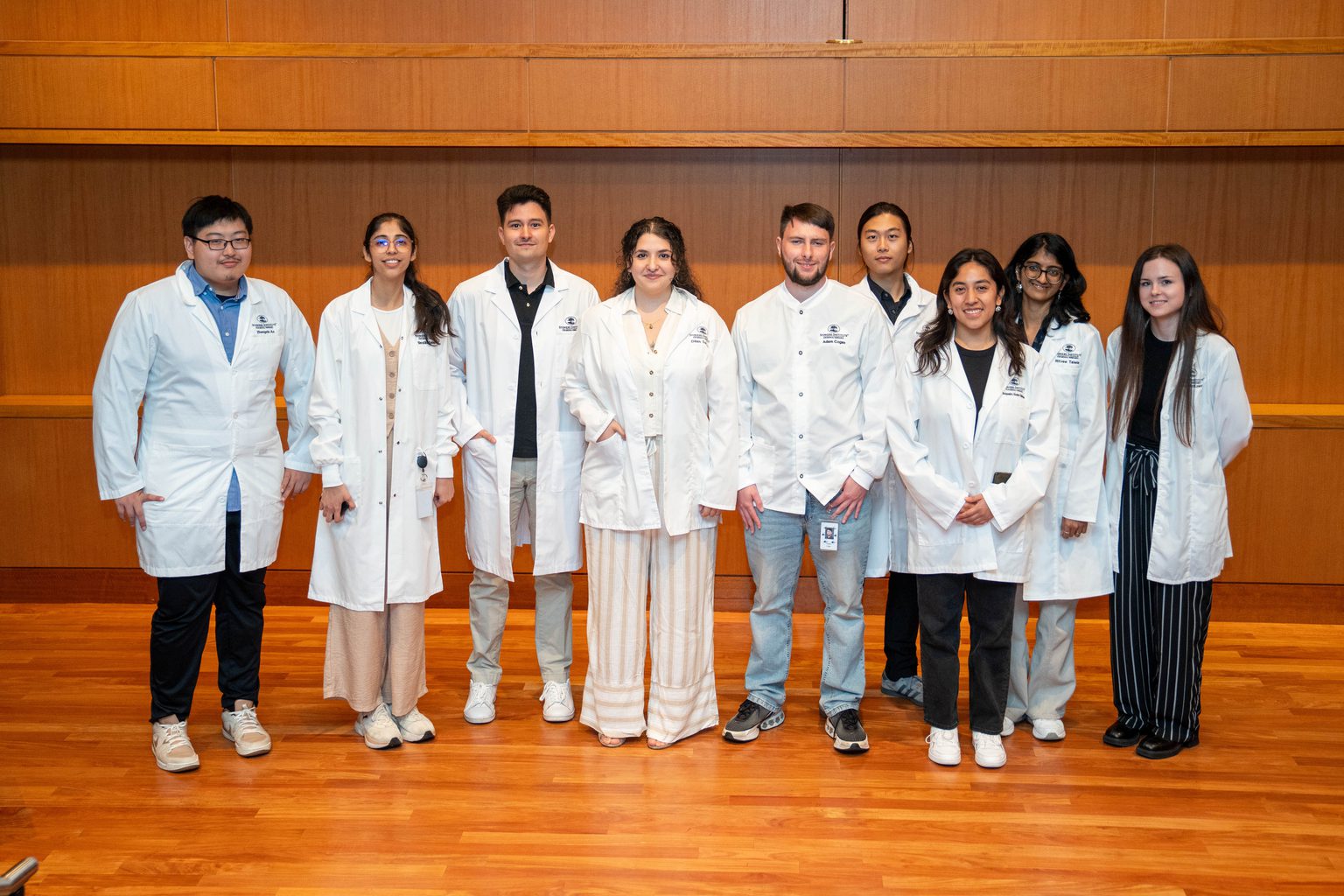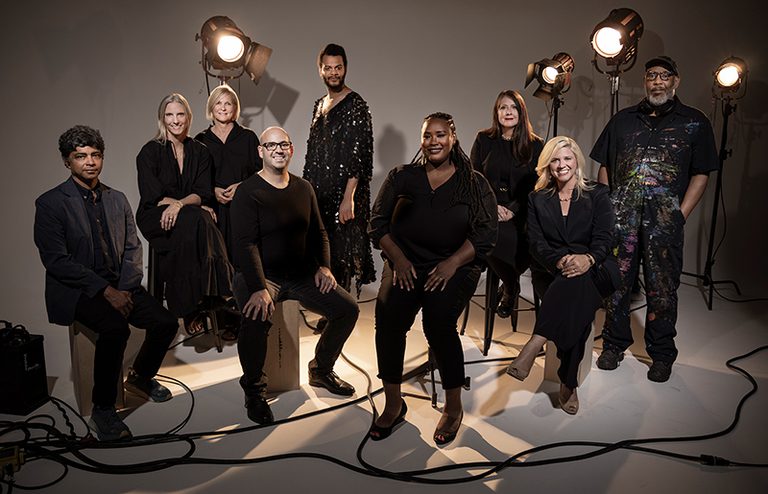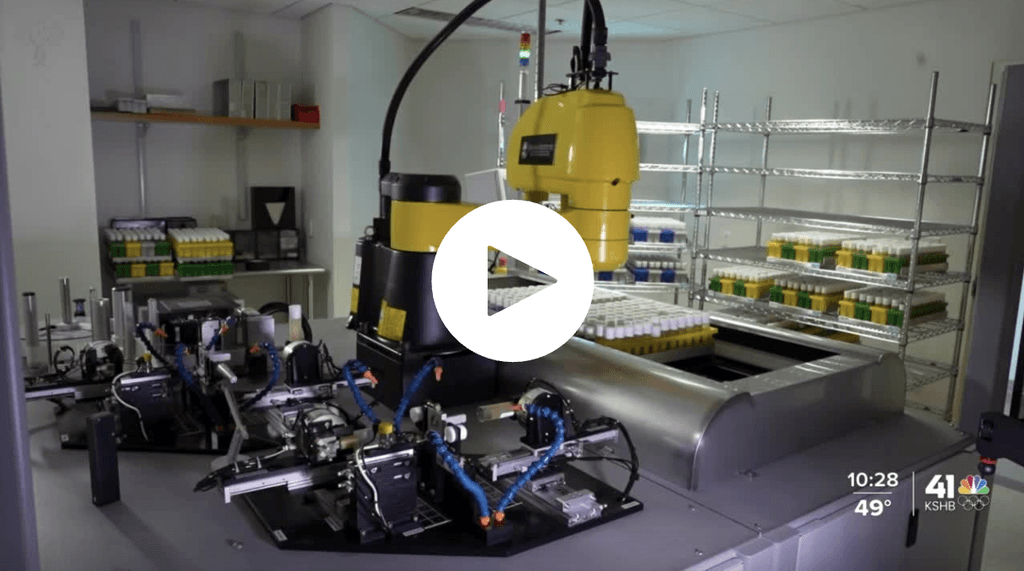News

09 October 2025
2025 Lab Coat Ceremony Welcomes Graduate Students To Their Thesis Labs
An annual tradition marks the start of scientific discovery for the 2024-2025 class of Stowers Graduate School students.
Read Article
By Elise Lamar, PhD
Technology speeds discovery, but only if you know how to use it. Three highly skilled Stowers scientists offer unique solutions to researchers’ technical dilemmas. And yes, they make lab calls.
Associate Investigator Kausik Si, PhD, was on the cusp of a major discovery but at his wits’ end. His lab had mountains of data showing that a self-aggregating protein in the fruit fly brain formed the very basis of long-term memory. Si was poised to report this groundbreaking story. But there was a problem.
Biochemical evidence indicated the memory protein had to be present on nerve cells, but Si’s team couldn’t detect it microscopically. This was no small matter—submitting a paper without this crucial evidence would be tantamount to announcing you’ve discovered a new planet that nobody can see. Unbelievable.
Si mentioned the problem to Brian Slaughter, PhD, and Jay Unruh, PhD, who work on his floor and act as in-house consultants known as research advisors. They sat down with members of his lab and applied a microscopy technique called spectral imaging to image fly nerve cells while filtering out noise created by the sea of other proteins. The effort paid off, and the study, including an image showing dots of the memory protein peppering the connection points between nerve cells in a fly brain, was published in Cell in early 2012.
The architects
Almost four years ago, Stowers Scientific Director Robb Krumlauf and President and CEO Dave Chao came up with the concept of research advisors. Their goal was to attract PhD-level scientists with specialized skills as full-time consultants to faculty on highly technical matters, something unusual at an academic institution.
“Other institutions had difficulty defining positions like this,” says Krumlauf, explaining that most PhD-level scientists in academia either teach or do independent research. “But we wanted to provide hands-on advice on the application of cutting-edge technology in-house to Stowers faculty and at the same time find ways to acknowledge and reward these people for their talents.”

Wanted: multitaskers
Keeping a diverse faculty of twenty “homeowners” happy demands tremendous intellectual flexibility.Rubinstein, Slaughter, and Unruh routinely consult with faculty working in model organisms as diverse as yeast and zebrafish. They also simultaneously ponder questions as seemingly unrelated as how Drosophila cell shape guides cell division to how yeast nuclear proteins pull chromosomes apart.
Slaughter says his average day could include teaching a postdoc to use a new technique on a microscope, attending an investigator’s lab meeting, analyzing data by himself, and then kicking back to stay up with scientific literature. Unruh is more specific: “I spent half of today writing chromosome-counting software for Rong Li’s lab and the other half counting centromere spots for the Hawley lab. But I usually do about five things at a time.”
Research advisors also spend a lot of time informally educating faculty and students about ways to address a problem. “All these guys are just great teachers,” says Stowers Investigator Rong Li, PhD, who works frequently with all three. “I have a white board in my office that Boris occupies. He writes out his equations for my students and postdocs in the nicest handwriting. What he puts there, stays there.”
Brian and Jay
Slaughter and Unruh became microscopy research advisors in 2010 and now often work together, so much so that most Stowers faculty refer to them as a unit. Both earned chemistry PhDs from the University of Kansas, but their skills span very different areas of expertise. Unruh was a postdoc at the University of California, Irvine, where he applied fluorescence microscopy to mammalian cells, while Slaughter studied yeast cell asymmetry as a postdoc with Li before moving into the research advisor position.
“Jay is an incredibly talented programmer. He writes all our software, while I struggle to program my alarm clock,” says Slaughter. Unruh calls Slaughter the “experimentalist.” “I consider Brian one of the world’s experts on advanced microscopy in budding yeast, which comes in quite handy around here.”
Currently, about a third of the labs at Stowers use yeast as a model system, among them the lab of Associate Investigator Jennifer Gerton, who studies cell division. She focuses on a chromosomal structure called the centromere, which in yeast and vertebrates is part of a complex that pulls chromosomes into daughter cells during cell division. A year ago researchers in her field still argued about how many molecules of the yeast protein resided in each chromosome twisted into a centromeric knot and if that number could vary.
Gerton, who relies primarily on biochemistry and genetics, asked Unruh and Slaughter if microscopy could resolve the question. They suggested combining two approaches—brightness measurements and a method known as fluorescence correlation spectroscopy—to come up with what they called calibrated imaging. That technology enabled the Gerton team to literally count how many Cse4 molecules hooked to a fluorescent tag glowed in a dot marking a centromere in living cells, a daunting task since the centromere moves.
In the end, the highly technical approach solved the problem: this year the Gerton lab used advanced microscopy in part to report in Cell that the centromere of each chromosome contained just one copy of Cse4 up until the very end of cell division, a stage called anaphase. Then it added one more, which changed the overall architecture of the centromere.
“This question has been a matter of intense debate,” says Gerton, noting that forming a centromere correctly dictates whether a cell will drag the right number of chromosomes into daughter cells. “Brian and Jay combined two methods to come up with a way to answer this question. That approach is not something my lab would have developed on our own.”
Biology grows up
If you are of a certain age, you may wonder why you didn’t learn about this kind of biology in high school. The answer is, it only emerged in the last two decades from the onslaught of genomic/proteomic data, the capability to image living cells, and the upsurge in computer power available to make sense of this information.
Seen from mathematician Rubinstein’s perspective, this means that biology is finally becoming a quantitative science. “For a long time, biology was considered a purely descriptive science,” he says. “But that’s not enough. The goal is to be able to make predictions.”
Born in Russia, Rubinstein earned a PhD in optics at Irkutsk State University in Siberia and worked as an engineer and mathematician in Israel and the US. When he started postdoctoral studies at the University of California, Davis, in 2002, he encountered biologists for the first time and advised them on mathematical models of cell motility. Recruited to Stowers in 2007, he became a research advisor three years ago with a mission to counsel faculty on issues ranging from mathematical modeling to biophysics.
Rubinstein speaks Russian, Hebrew, and English. He also uses scientific language different from most biologists. For example, in 2011 he published papers with Associate Investigator Matt Gibson on what he calls “a question of geometry” (translation: how epithelial cells pack into a sheet) and in 2012 and 2013 with Rong Li on two mechanical problems related to cell division in different organisms. Plus he also occasionally refers to cells as “elastic bags filled with water.”
A matter of survival
According to Li, collaborating with technology-savvy advisors isn’t a luxury–it’s how a scientist survives today’s biology revolution. “If you aren’t working in an interdisciplinary way, you won’t be at the cutting edge,” she says. Li should know. Over the last three years, she has frequently teamed with one or more of the research advisors to produce a string of coauthored publications, many reported in high-impact journals.
One, published early this year in Nature Communications, addresses how cells achieve sidedness, or polarity. Working with Slaughter, Unruh, and Rubinstein, Li and her students used microscopy and mathematics to expand her previous model of how yeast cells concentrate a cap of Cdc42 protein in a discrete region of the cell membrane that buds off to form a daughter cell.
In 2009, she, Slaughter, and Rubinstein had reported in Developmental Cell that the membrane distribution of Cdc42, which is trucked around cells on vesicles or chaperoned by a protein called Rdi1, is mathematically described via a balance of exocytosis, which carted Cdc42 to a target area in the cell membrane, endocytosis, which grabbed it back inside cells when it wandered off into adjacent regions, and Rdi1-based recycling.
The new work addresses questions others raised about their model. Combining imaging conducted by Slaughter, computer simulations run by Unruh, and mathematical modeling done by Rubinstein, Li shows that the model works only when one posits that membranes in the bud area are stickier than regions beyond it. “This analysis suggested that there are membrane regions with high and low diffusion rates,” says Rubinstein. “Once you consider this imbalance, you can predict where there will be regions of increased protein in a membrane.”
These predictions are not simply a “game for mathematicians,” as Rubinstein recalls old-guard biologists once saying. A computational framework for how cells create polarity explains why animal cells, like neurons or gut epithelial cells, don’t look like bags of water but instead exhibit wildly variant shapes critical to their functionality. Plus, loss of polarity is a hallmark of cancer cells.
Defeatists: Look elsewhere
Unruh says the Nature Communications study emerged not only from hard work but from brainstorming sessions among people with unique skill sets—often for long hours in Li’s office. “Stowers is one of the few places in the world where that problem was solvable,” Unruh says, adding that Stowers’ advanced instrumentation played no small part.
Not all stories have such a happy ending, but research advisors have a high tolerance for failure. “When one project isn’t working we usually have two others that are,” says Unruh. Slaughter has the same can’t-win-if-you-don’t-bet spirit: “If we pitch an idea to a researcher and discover it isn’t going to work, we come back to our office and think of another.”
Stowers investigators appreciate research advisors’ willingness to jump into complex problems as much as their expertise. “I really like working with these guys,” says Kausik Si. “They are some of the few people I know in science that when you suggest doing an experiment, they say, ‛'Hey! Let’s try it!’ rather than coming up with a hundred reasons not to.”
That’s because advising folks not to move forward is likely absent from the research advisor job description. Or as Unruh says, “This is the first time in my life where I can actually sit down in a meeting and say, ‘Let’s figure out the best way to answer this question’ as opposed to saying, ‘This is the best assay we have right now.’”
News

09 October 2025
An annual tradition marks the start of scientific discovery for the 2024-2025 class of Stowers Graduate School students.
Read Article
In The News

03 July 2024
From In Kansas City Magazine: Meet 10 people, including Stowers Scientific Director Kausik Si, Ph.D., who are making a difference in Kansas City.
Read Article
In The News

08 March 2024
From KSHB, one of the area's top scientists, Kausik Si, Ph.D., from the Stowers Institute received a coveted award for his "paradigm shifting" work to understand how our memory works and how that defines us.
Read Article
Press Release
21 February 2024
Scientific Director Kausik Si from the Stowers Institute for Medical Research alongside Investigator Lukasz Joachimiak from the University of Texas Southwestern Medical Center received CZI's Collaborative Pairs Pilot Project Awards grant for their project titled, “Tuning memory by altering amyloids.”
Read Article